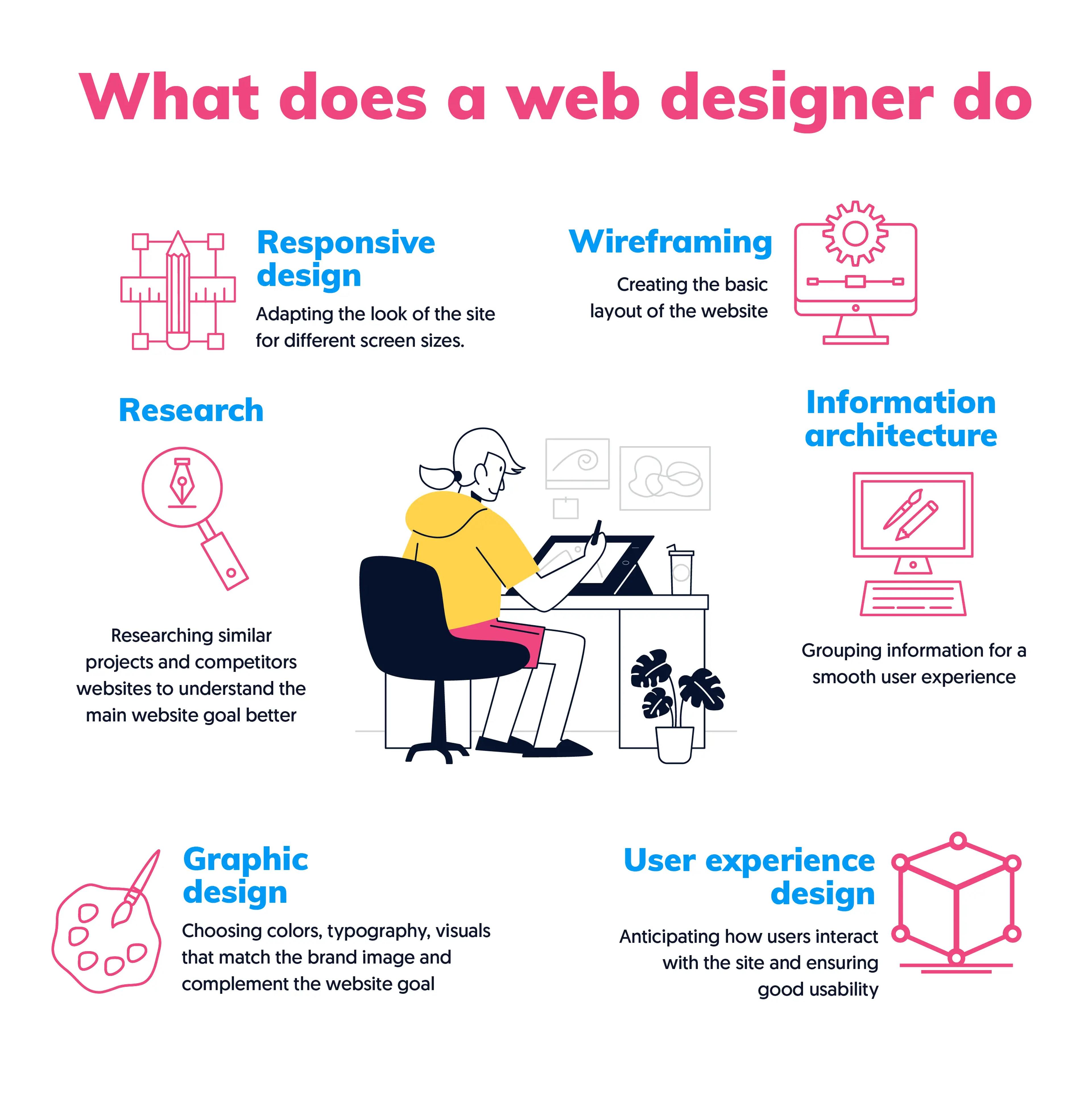Imaginative Internet Design Solutions for Modern and Engaging Sites
In the world of internet layout, the quest of contemporary and appealing options has actually ended up being progressively essential for businesses intending to record customer interest. By integrating strong color schemes, interactive components, and receptive formats, developers can develop experiences that not only resonate with users yet additionally improve brand identity.
Embracing Vibrant Color Design
In web design, the strategic use strong color design can significantly boost individual interaction and brand identification. By utilizing dynamic hues, designers can create aesthetically striking sites that capture focus and promote a remarkable experience. A well-chosen color scheme not only mirrors a business's values yet likewise stimulates certain emotions that can influence customer behavior.
Vibrant colors can be used to direct users' interest to key components such as phone call to activity, boosting conversion rates. For example, utilizing contrasting colors for switches and links can make these aspects stand apart, prompting users to communicate more readily. Moreover, a natural color pattern throughout the site enhances brand recognition, developing a sense of experience and count on among site visitors.
Nevertheless, it is crucial to stabilize vibrant shades with adequate white area to prevent frustrating customers. Effective use typography likewise matches vibrant colors, guaranteeing readability while preserving aesthetic allure. Inevitably, embracing bold color plans in website design not just boosts visual top quality but also plays an essential function in accomplishing calculated service purposes, making it a crucial consideration for modern web development.

Making Use Of Interactive Aspects
Interactive elements are necessary in modern-day website design, as they substantially enhance customer engagement and develop a more vibrant browsing experience. By including features such as computer animations, hover effects, and clickable components, websites can urge users to check out web content a lot more thoroughly and return for future sees.

Micro-interactions, such as refined computer animations when a button is clicked or a type is submitted, can additionally boost the customer experience by supplying instant feedback. These small information can make the internet site really feel even more responsive and alive, cultivating a feeling of connection between customers and the website.
In addition, gamification components, such as benefits for finishing certain activities, can inspire users to engage with the web content a lot more deeply. By attentively integrating these interactive parts, web developers can develop a memorable and appealing online experience that reverberates with users and encourages them to return.
Applying Responsive Layout
Implementing receptive layout is essential in today's multi-device landscape, ensuring that web sites provide an ideal watching experience across different display dimensions. As users progressively access the net through mobile phones, tablet computers, and desktops, a one-size-fits-all technique is no more practical. Receptive layout allows for seamless navigation and communication, adjusting format and content to fit the gadget being utilized.
Trick concepts of responsive design include fluid grids, adaptable photos, and media questions. Media questions promote the application of various designs based on the gadget's qualities, such as width, height, or resolution, permitting designers to tailor the user experience properly.
In addition, receptive style improves SEO efficiency, as internet search engine prefer mobile-friendly sites. By executing receptive layout, organizations not just enhance user satisfaction and involvement however also increase their reach in an affordable digital landscape. As technology remains to progress, adopting responsive layout has become a basic method for any modern-day and appealing website.
Incorporating Multimedia Content
Multimedia web content plays an important role in producing appealing and dynamic internet experiences that capture individuals' attention and boost understanding. By combining message, images, sound, and video, web sites can provide a richer story that appeals to numerous discovering designs and preferences. This assimilation not only strengthens user involvement but likewise help in conveying intricate ideas succinctly.
Integrating top quality photos and infographics can separate textual material, making it more digestible. In a similar way, video tutorials and presentations can supply in-depth insights that fixed web content may not completely connect. Audio components, such as podcasts or history music, can also improve the ambience of a site, producing an extra immersive experience.
Moreover, the tactical use of multimedia can enhance search engine optimization efficiency, as internet search engine prefer varied web content kinds, increasing visibility. Nevertheless, it is critical to ensure that multimedia components do not prevent web Source page lots times, as this can lead to user aggravation. By stabilizing multimedia combination with performance considerations, web designers can develop aesthetically enticing and practical web sites that resonate with users, fostering a deeper connection and motivating return brows through.
Focusing On Individual Experience

To accomplish explanation an optimum customer experience, designers need to concentrate on several crucial concepts. Initially, responsive design is necessary; websites ought to adapt effortlessly to numerous devices and screen dimensions. This accessibility guarantees that individuals can engage with content despite their selected system. Second of all, quality in format and power structure is crucial. Clear contact us to action, readable typography, and organized content overview customers, lowering cognitive lots.
In addition, integrating individual feedback right into the layout process is indispensable. Regular screening with actual individuals helps recognize discomfort points and locations for renovation, enabling repetitive enhancements. Eventually, prioritizing UX not just raises individual satisfaction yet likewise drives engagement and conversion prices, making it an important element of modern-day web design methods. By placing users at the facility of design efforts, web sites can produce long-term, favorable impacts that encourage return visits.
Conclusion
To conclude, modern web layout solutions that highlight vibrant shade plans, interactive elements, responsive style, and multimedia web content considerably improve customer engagement and complete satisfaction. Focusing on customer experience through clear layouts and constant responses better contributes to enhanced conversion prices. By adopting these techniques, web sites can properly astound visitors and reinforce Get the facts brand identity, eventually causing a much more vibrant and interesting on-line visibility. The assimilation of these design principles is necessary for attaining modern-day website design purposes.